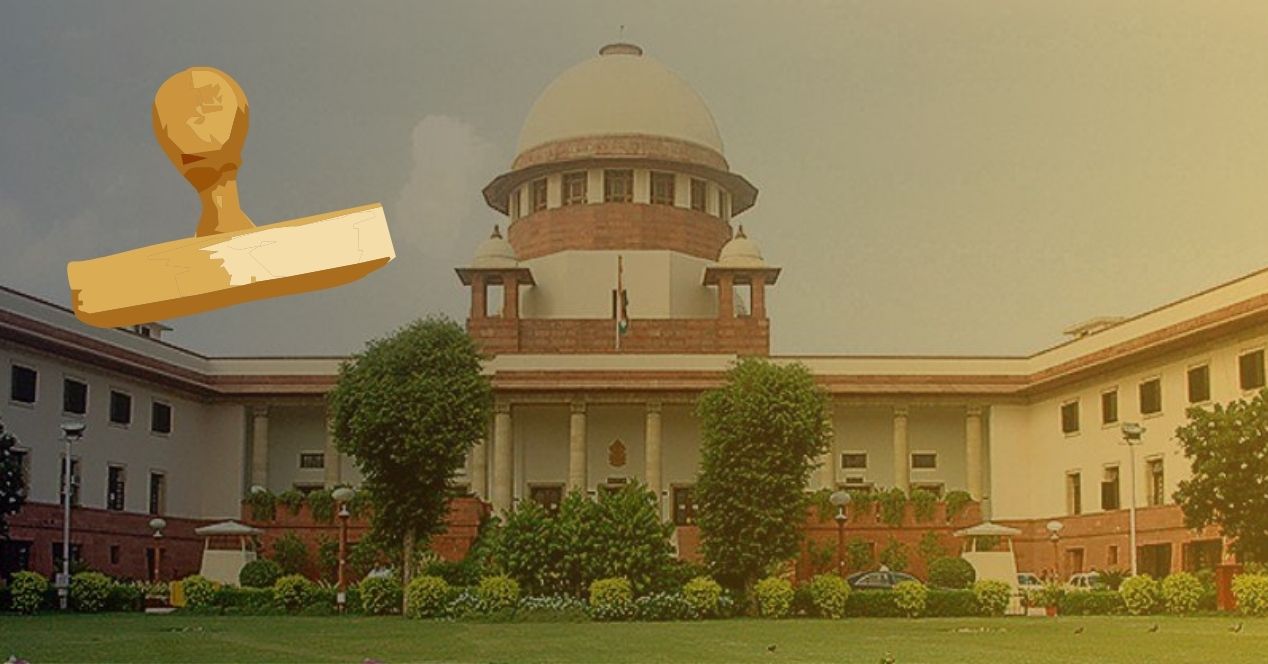Analysis
Binding non-signatories to arbitration—bringing India on par with international practice
SC's clarifications on the Group of Companies doctrine in arbitration weave in flexibility while maintaining guardrails around the approach

A five-judge Constitution Bench of the Supreme Court recently pronounced its judgement in Cox and Kings Ltd. v. Sap India Pvt. Ltd. The top court answered a reference from a three-judge bench and settled the law on binding non-signatories to an arbitration agreement by applying the Group of Companies Doctrine (GOC Doctrine).
Chief Justice D. Y. Chandrachud, writing for the majority, held that the GOC Doctrine finds genesis in Section 2(h) and Section 7 of the (Indian) Arbitration and Conciliation Act, 1996 (Arbitration Act) and should be applied as an independent doctrine. In a separate, concurring opinion, Justice P.S. Narasimha held that the GOC Doctrine finds backing in Section 7(4)(b) of the Arbitration Act. The Supreme Court was unanimous in holding that Indian arbitration jurisprudence ought to keep up with international developments to ensure that India remains an arbitration-friendly jurisdiction.
In this article, we analyse Cox and Kings and consider some of its practical implications.
Evolution of the GOC Doctrine in Indian arbitration jurisprudence
The Supreme Court first described how a non-signatory can be bound by an arbitration agreement in Chloro Controls (2013). In that case, it held that the GOC Doctrine finds root in the words “claiming through or under [a party]” in Section 45 of the Arbitration Act. Further, the Supreme Court listed certain factors for a court to consider when faced with the issue of referring a non-signatory to arbitration. These factors include the existence of a direct relationship with a signatory, commonality of subject matter, and the existence of a composite transaction.
The overbroad and expansive interpretation in Chloro Controls created interpretational issues. At times, it led to manufacturing consent rather than implying consent. The main points of criticism of the Chloro Controls approach were: First, the Supreme Court made no efforts to distinguish between consensual and non-consensual theories of binding non-signatories to arbitration. These theories find wide recognition among jurists and jurisdictions around the world. Second, the Supreme Court appeared to contradict itself when it held that the non-signatory should have intended to be bound by an arbitration agreement, and that there are limited instances where a non-signatory can be bound without prior consent.
Justice Surya Kant picked up on this contradiction and wrote a separate, concurring opinion in the reference. Importantly, he noted that the ability to bind non-signatories to arbitration is essential for effective dispute redressal in India.
After Chloro Controls, there were several judgments where the Supreme Court had to deal with the issue of non-signatories being bound by an arbitration agreement. These included Cheran Properties Ltd v Kasturi and Sons Ltd. (2018); Ameet Lalchand Shah v Rishabh Enterprises (2018); Reckitt Benckiser (India) Private Limited v Reynders Label Printing India Private Limited (2019); and Mahanagar Telephone Nigam Ltd. v Canara Bank (2019).
In Discovery Enterprises (2022) (which was pronounced a few days prior to the reference in Cox and Kings), the Supreme Court held that there are multiple factors that ought to be considered before binding non-signatories to arbitration. This included the parties’ mutual intent, relationship of a non-signatory to the signatory, commonality of subject matter, composite transaction, and performance of the contract.
In essence, the Supreme Court emphasised the need for performance or action to prove consent to the arbitration agreement rather than mere reliance on the relationship or association of the company to the signatory.
Key takeaways from Cox and Kings
Cox and Kings unanimously acknowledged the ability of Indian courts and tribunals to bind non-signatories to an arbitration agreement. The Supreme Court recognised that there are two paths to achieve this. First, the consent-based path where a non-signatory can indicate their consent to be a party in multiple ways. Second, the non-consensual path to extrapolate an arbitration agreement to a non-signatory, which could involve piercing a company’s corporate veil or applying the alter-ego or agency principles or looking at novation and assignment.
The Supreme Court thereafter held that the GOC Doctrine is a consent-based principle and has independent existence. Chief Justice Chandrachud relied on the definition of a “party” in Section 2(h) of the Arbitration Act and the expansive scope of Section 7 of the Act to prove the existence of an arbitration agreement. Justice Narasimha agreed with this approach and emphasised that the GOC Doctrine could be applied when there is mutual intention of all the parties to settle their disputes through arbitration. The Supreme Court affirmed that the factors set out in Discovery Enterprises are an effective ‘bright-line’ test to confirm consent. The Court further held that the Chloro Controls formulation of a party claiming “through and under” is incorrect (although well-intentioned).
Importantly, Cox and Kings held that the GOC Doctrine does not dilute party autonomy in any way. The Supreme Court clarified that Section 7 of the Arbitration Act permits a party to establish its consent to be bound by an arbitration agreement in multiple ways, not solely by signing. In other words, the GOC Doctrine is consistent with Section 7 as the absence of a signature is not conclusive.
The GOC doctrine merely provides another avenue to bind non-signatories. To this end, the Supreme Court found a way to harmoniously read the counterintuitive statements identified by Justice Surya Kant in Chloro Controls.
On the powers of the arbitral tribunal
After conclusively establishing that the GOC Doctrine is part of Indian jurisprudence, the Supreme Court made another important finding—that it is well within the arbitral tribunal’s domain to apply the GOC Doctrine to determine whether to bind a non-signatory. Indeed, the preference is for an arbitral tribunal to do so over a court when dealing with referral applications under Sections 8 and 11 of the Arbitration Act. This is a positive re-assertion of the competence-competence doctrine, which forms the bedrock of arbitration jurisprudence around the world.
Cox and Kings also placed emphasis on the negative aspect of the competence-competence principle. This aspect is addressed to courts and requires them to exercise judicial restraint while dealing with the arbitral process. Now, Indian courts ought to be circumspect at the referral stage as they are only required to determine whether a valid arbitration agreement exists.
Courts must refrain from applying the GOC Doctrine—or any other principle to bind non-signatories—as it involves a complex assessment of facts. In the same vein, the Court held that a non-signatory can also seek interim measures from a court under Section 9.
Finally, the Supreme Court noted that its findings in Cox and Kings do not preclude the application of other principles (such as the non-consensual theories of agency, novation, and assignment) to bind non-signatories to an arbitration agreement.
Some practical considerations in arbitration proceedings
The judgement, particularly the parts on the origins of the GOC Doctrine, will go a long way in aligning Indian arbitration jurisprudence with internationally accepted practices. Chief Justice Chandrachud emphasised the need for finding a balance between the consensual nature of arbitration and modern reality where non-signatories are regularly implicated in commercial transactions.
A non-signatory party’s active involvement in the performance of commercial obligations which are intrinsically linked to the underlying subject matter will demonstrate that first, it intended to be bound by the arbitration agreement, and second, it is not a stranger to the dispute between signatory parties.
India’s promoter-driven family business culture is one of the reasons it’s essential to include non-signatories for effective dispute resolution. It is also common for some entities to be involved in the negotiations of a contract, and others to be involved in execution and performance (such as in many large-scale infrastructure projects).
The non-signatory may be involved in a manner that creates an appearance that it is a veritable party to the contract containing the arbitration agreement, or its conduct “may be in harmony with the conduct of other members of the group,” leading the counterparty to believe that the non-signatory was a veritable party.
The factual threshold laid down by the Supreme Court is that a non-signatory should have had a “positive, direct, and substantial involvement in the negotiation, performance, or termination of the contract.” Incidental involvement is insufficient to bind a non-signatory. The Court also held that the burden is on the party seeking joinder to “prove a conscious and deliberate conduct of involvement of the non-signatory based on objective evidence.”
As practitioners in the field of arbitration (both India-seated and foreign-seated), we welcome the decision in Cox and Kings. The Supreme Court expressly refrained from delving deeper into the combination of factors which would result in the successful invocation of the GOC Doctrine. It cautioned that this is a fact-based exercise and that courts and tribunals must have flexibility to assess facts on a case-by-case basis. This assessment aligns with the practitioner’s perspective. In our view, the Supreme Court has managed to successfully weave in sufficient flexibility while maintaining guardrails on the approach to binding non-signatories.
V.P. Singh and Durga Priya Manda are, respectively, Senior Partner and Senior Associate at AZB & Partners, a law firm in India. The views expressed in this article are that of the authors alone and not of AZB & Partners.




